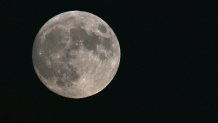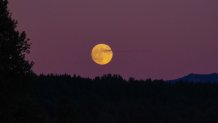A full moon will reach its nearest point to Earth Tuesday night, becoming an awe-inspiring supermoon in June known as a "strawberry moon." Here's what San Diego skywatchers should know.
What is a supermoon?
A supermoon occurs when the moon's orbit is at its closest point to Earth -- on average about 226,000 miles -- at the same time it's in its full moon phase. When the two occur at the same time, the full moon appears brighter and larger than a regular full moon.
We add another layer to this with the modifier "strawberry." So what's that all about?
Get San Diego local news, weather forecasts, sports and lifestyle stories to your inbox. Sign up for NBC San Diego newsletters.

What is this full moon a "strawberry" supermoon?
In the 1930s, the Maine Farmer's Almanac began publishing Native American names for full moons, according to NASA. The Algonquin tribes of the northeastern U.S. dubbed June's moon the strawberry moon due to the harvesting season.
Local
In Europe, the June full moon may be called the "rose," "mead" or "honey" moon. Yes, according to NASA, the term "honeymoon" likely came from 1500s Europe, when many married in June during the honey moon.
While the name may hint the moon could be bright red like the fruit, it's not the case. The strawberry description has nothing to do with color. A supermoon will have an orange or red tint only when it is closer to the horizon because the moon's light has to pass through more air.

Where can I see the Strawberry Supermoon?
You can catch the supermoon anytime between moonrise at about 8:47 p.m. Tuesday and moonset at 5:36 a.m. Wednesday. NASA said it'll be the biggest and brightest when it's closest to Earth -- about 23.3 degrees above the horizon -- just before midnight PDT.
If you prefer watching from the comfort of your home, the Virtual Telescope Project will host a free live stream of the moon as it rises over the monuments of Rome. The webcast will start at 3:15 p.m. EDT.



